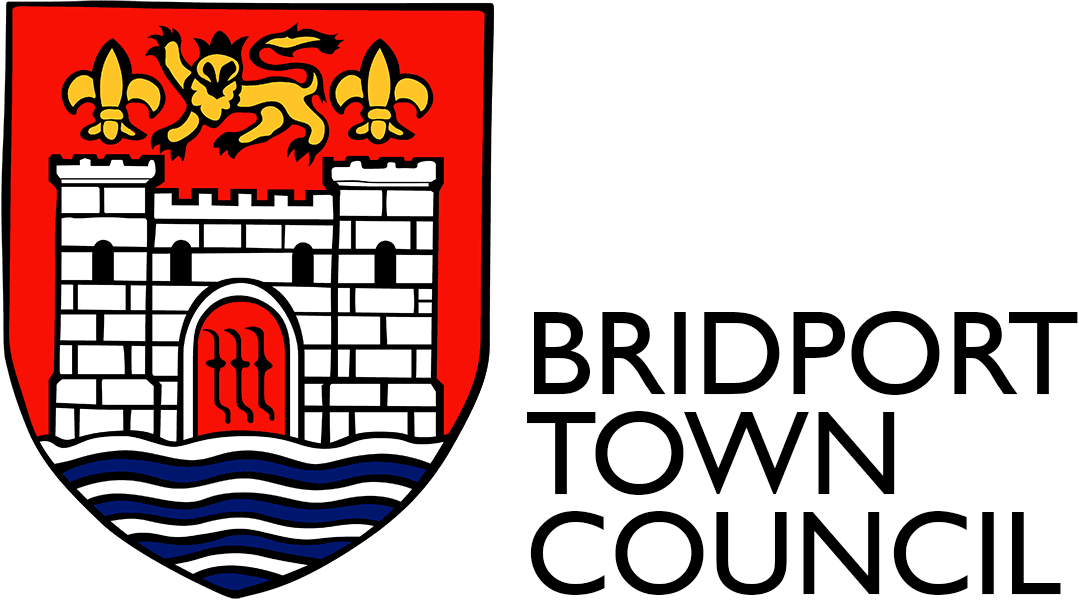Putting the Streetscapes & Heritage Interpretation Study into Action.
The Bridport Streetscape & Heritage Interpretation Study was completed in the autumn 2022. The study forms an important element of the Bridport Investment Plan and The primary themes and concepts revealed by the research focus on creating a set of interventions and mechanisms that will enable Bridport to create a bespoke heritage and interpretation system.
With support from the Dorset National Landscapes Sustainable Development Fund we have researched and produced two new heritage trails to encourage visitors and residents to explore the Town and find out more about our rich heritage assets. Downloadable versions of the new heritage trails are available:
Print version of the new heritage trail leaflets are also available from Bridport Tourist Information Centre.
4 downloadable podcasts have been produced to add interest to the new walking routes.
- Boozy Bridport
- George Biles “ King of Signwriters”.
- Women and ropemaking
- Shipbuilding in Bridport Harbour
More podcasts will be developed in the future to extend the range of heritage stories available.
The Goerge Biles “King of Signwriters” podcast was made possible with funding from the Heritage Fund thanks to National Lottery players.
 |
Background
The Bridport Area Neighbourhood Plan contains a dedicated section with policies regarding the future management and development of the area defined as the Centre of Bridport – see: https://www.bridport-tc.gov.uk/projects/neighbourhood-plan/
A key piece of work that the community volunteers involved in the BANP identified, but were unable to undertake or commission, was the need to review the functionality of the current streetscape/public realm and audit heritage interpretation. It is especially important, given the demography of the Town, to consider the needs of an ageing population and those with mobility issues.
A companion BANP Project study, published in 2021, considered Access & Movement in and around the centre of Bridport. The study has informed the streetscape planning and heritage interpretation recommendations that flow from the more recent commission.
A Town Centre Working Group was established by Bridport Town Council in 2019 to oversee and drive delivery of policy ambitions and projects related to the future of the centre Of Bridport. A Town Centre Health Check has been undertaken in 2019 and 2021; see: https://www.bridport-tc.gov.uk/healthcheck/
Streetscape & Heritage Interpretation Report
The brief to the commission required:
1) The ambition of the Bridport Area Neighbourhood Plan is to create a high-quality public realm throughout the Centre of Bridport. The streetscape analysis will consider options for:
- Reinforcing the distinct sense of place and unique identity of Bridport, including revisiting the idea of defined ‘quarters’ around the town;
- Prioritise walking (including mobility vehicles and pushchairs)and cycling around the Bridport area;
- Reducing signage and street furniture clutter;
- Promoting safe, secure, and accessible for all spaces;
- Permeable, legible, and better-connected spaces;
- Further developing the popular street market and outdoor events;
- Improving weather protection and resting points for shoppers;
- Promoting low carbon, natural materials, locally sourced where possible and
- Delivering good value for money.
2) The ambition of the heritage interpretation analysis is to provide coherent, coordinated and well-connected interpretation across the Bridport Area. The interpretation analysis will consider options for:
- Encouraging local communities to engage with, value and celebrate their heritage;
- Helping people to experience, understand and value heritage;
- Promoting sustainable visits to the town;
- Better harnessing heritage to promote and support the local economy;
- Using sustainable natural materials that are durable, easy to maintain and compatible with a shift to a circular economy.
Feria Urbanism were appointed as consultants for this commission and undertook work, including community ‘walkabouts’ in Summer 2022. A final report will be presented to the Full Council in November for consideration.
Streetscape and Heritage Interpretation – Full Report
Putting the Streetscapes & Heritage Interpretation Study into Action, Summer 2023.
The Bridport Streetscape & Heritage Interpretation Study was completed in the autumn 2022. The study forms an important element of the Bridport Investment Plan and The primary themes and concepts revealed by the research focus on creating a set of interventions and mechanisms that will enable Bridport to create a bespoke heritage and interpretation system. This summer we are looking to develop the idea that the system should comprise a set of interconnected parts that can be used by Bridport Town Council and its partners (e.g. the Bridport Museum) to establish a permanent set of physical interventions from which flexible content, such as audio guides, can be accessed and promoted.
The recurring themes that emerged during the research phase included:
- The importance of the rivers in shaping Bridport;
- The way that rope making has shaped the town;
- The materials used to create rope;
- Bridport as a place at the intersection between industrial and rural
- A spirit of revolution and resistance
The research phase concluded that this project needs a multi-faceted approach that leads to a single, joined-up outcome. The opportunity now exists to create a wayfinding system that can look back, take stock, and reflect but also look to the future and consider how the local context fits into a global context.
Working at different Scales
The first recommendation is to deploy a system that links the urban heart of Bridport with its surrounding landscape. The history of the town is intrinsically linked to the adjacent countryside – the source of much of its economic wealth, both in the past (for hemp growing for rope manufacture) and today (for tourism and outdoor recreation).
The approach to working at scale is to streamline existing walks, trails, and public rights of way into three circular routes that range in scale and distance, encompassing different parishes and offering accessibility to different people.
Wayfinding Kit of Parts
The physical elements can be considered as a “set of things” which are all dressed in the same outfit but perform different tasks. The physical elements could comprise the following:
- Wayfinding posts, totems, and signage;
- Tiles and objects;
- Community noticeboards;
- Community meeting places – specifically identified places to meet, to talk, to socialise.
For the wayfinding elements, a simple architecture is required. For example, these might be posts with designs that could also contain a draw for geo-caching type exchange of objects. In this sense, the wayfinding markers are primarily concerned with defining routes, giving direction, and moving people around as well an element of interpretation.
Once the routes have been defined by the waymarking elements, a second layer of engagement is recommended in the form of a series of colours or engaging tiles located on walls, the ground, and other surfaces. These tiles can be scattered along the route and would be moments of surprise and engagement as people explore and discover more of Bridport.
These tiles could fall under three headings:
- Archive photos, shown in or as near as possible to the specific location, allowing alternative and historic views of a place
- Instructional tiles which suggest walkers ‘look up’ or ‘check out the view’
- Fact-based tiles that provide historical and contemporary information such as the longest rope, the tallest tree etc.
Alongside consultation on the proposed routes we are asking local people to propose heritage or nature ‘stopping points’ along the routes where we might install a waymarking element to bring awareness of something that is of interest or part of the Bridport story. Later in 2023 we will be going out seeking a commission to design and install waymarking kit along the three routes.
The recommendation for content creation is to work with the of existing archive images and text to create a series of discrete, jewellike tiles that could be attached to buildings and places of interest.
As objects they would function as curious indicators, revealing past residents, events, or moments. As a set of interventions, this set of images and instructions embedded in the streetscape, attached to walls, and so on will create a series of curious moments for the casual Bridport wanderer. However, for those wishing to find out more, the Bridport Museum (or others) could use these tiles as prompts to create a series of podcasts/audio guides that re-contextualise the locations where the tiles are found. These audio guides will be part of the flexible programmable system.
Flexible Programmable System
Podcasts or audio guides can provide a deeper level of engagement. The podcasts/audio guides could follow the pre-determined routes as mapped by trails and refer to the archive images installed along the way.
Podcasts/audio files could be hosted on a website for anyone to download and listen to and should be downloadable onto a smartphone. There could also be a paywall with a donation option.
The podcasts/audio guides will allow for the plurality of the town’s heritage that people feel so strongly about but will not add to the street clutter in a way a plurality of physical objects might do.
However, the podcasts/audio guides can also function as a flexible space. They can be recorded and re-recorded in order to reflect the open-ended interpretations of history, complexity, and nuance. For example, different guides can be uploaded for different seasons and different anniversaries.
After an initial set of podcasts/audio guides, further commissions could include fiction, music, tradition and so on. Bridport could end up with an “album of audio trails” and people could be encouraged to contribute their own. Anybody could record one or, indeed this presents a further commissioning opportunity. There could be an annual award to a historian, a writer, an artist, or a musician to create a new audio guide.
This approach also allows for a community engagement programme. For example, workshops could be run by the writers’ group The Bank of Dreams and Nightmares. This could create a work of fiction work linked to a particular part of the town.
These podcasts/audio files will no doubt focus upon specific locations along the routes, and some of these may be suitable for becoming community meeting points, identified using the same visual language as the other elements in the system.
If you have an idea for a heritage story that might make a good podcast we are looking to support up to 6 heritage podcasts in 2023/24.
Further Information contact:


